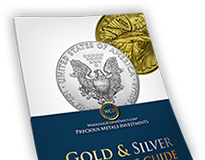- Gold $0.00 $0.00
- Silver $0.00 $0.00
- Platinum $0.00 $0.00
- Palladium $0.00 $0.00
Pricing:
| QUANTITY | E-CHECK/WIRE | CREDIT CARD |
|---|---|---|
| Any | $55,000.00 | $57,293.50 |

Get Our Free
Gold & Silver
Investor's
Guide
Description:
A tough date for cameo surfaces. An amazing proof Morgan.
NGC population- 3
The coinage law of 1873 made no provision for the standard silver dollar. During the lapse of coinage of this denomination, the gold dollar became the unit coin, and the trade dollar was used for commercial transactions with Asia.
Resumption of the silver dollar was authorized by the Act of February 28, 1878, known as the Bland-Allison Act. The weight (26.73 grams) and fineness (.900) were to conform with the Act of January 18, 1837. George T. Morgan, formerly a pupil of William Wyon in the Royal Mint in London, designed the new dollar. His initial M is found at the truncation of the neck, at the last tress. It also appears on the left-hand loop of the ribbon.
Coinage of the silver dollar was suspended after 1904, when demand was low and the bullion supply became exhausted. Under provisions of the Pittman Act of 1918, exactly 270,232,722 silver dollars were melted, and later, in 1921, coinage of the silver dollar resumed. The Morgan design, with some slight refinements, was employed until the new Peace design was adopted later in that year.
The coins weigh 26.73 grams (.859 troy ounces) and they are 90% silver, so each coin contains 0.77344 troy ounces of silver.
Specifications:
| Product Type | Coin |
|---|---|
| Coin Series | Pre-64 Silver |
| Purity | 90% |
| Mint/Refinery | U.S. Mint - Philadelphia |
| Metal Type | Silver |
| Face Value | $1 |
| Grade | PF68 |
| Coin Type | Certified |
| Modern or Historical | Pre-64 |
| Grade Service | NGC |
| Year | 1901 |
| Metal Weight | 0.7734 troy oz |





